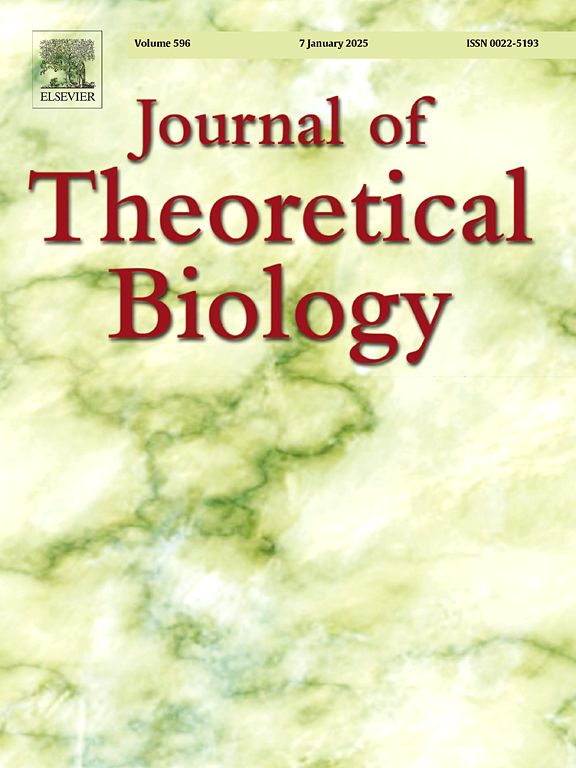突变体出现时间和人群免疫状况影响流行病学动态
IF 2
4区 数学
Q2 BIOLOGY
引用次数: 0
摘要
进化流行病学的一个关键问题是确定可能允许某些突变菌株在已经传播的常驻菌株的种群中传播的条件差异。进化入侵分析认为,对于先前感染的个体来说,免疫是持久的,这使得研究免疫逃逸等特征变得困难。我们放宽了最后一个假设,允许突变体所面临的环境在任何流行病学平衡之外波动。受SARS-CoV-2变体的启发,我们引入了一个原始的两株非马尔可夫模型,该模型考虑了现实的免疫减弱和交叉免疫。我们表明,具有增强传染性或具有某些免疫逃逸能力的突变体更有可能入侵种群。我们还表明,在种群中引入突变株的时间是关键,因为它与种群的免疫状态有关。我们的研究结果强调了免疫减弱和非平衡动力学在传染病进化中的重要性。本文章由计算机程序翻译,如有差异,请以英文原文为准。
Mutant emergence timing and population immunisation status impact epidemiological dynamics
A key question in evolutionary epidemiology is to determine differences in the conditions that may allow some mutant strains to spread in a population where a resident strain is already circulating. Evolutionary invasion analyses assume that the immunity is long-lasting for previously infected individuals making it difficult to study traits such as immune escape. We relax this last assumption and allow the environment faced by the mutant to fluctuate outside of any epidemiological equilibrium. We introduce an original two-strains non-Markovian model that accounts for realistic immunity waning and cross-immunity, inspired by the case of SARS-CoV-2 variants. We show that mutants with increased contagiousness or with some immune escape abilities are more likely to invade the population. We also show that the timing of the introduction of mutant strain in the population is key because it is associated with the population’s immunisation status. Our results underline the importance of immune waning and non-equilibrium dynamics on infectious disease evolution.
求助全文
通过发布文献求助,成功后即可免费获取论文全文。
去求助
来源期刊
CiteScore
4.20
自引率
5.00%
发文量
218
审稿时长
51 days
期刊介绍:
The Journal of Theoretical Biology is the leading forum for theoretical perspectives that give insight into biological processes. It covers a very wide range of topics and is of interest to biologists in many areas of research, including:
• Brain and Neuroscience
• Cancer Growth and Treatment
• Cell Biology
• Developmental Biology
• Ecology
• Evolution
• Immunology,
• Infectious and non-infectious Diseases,
• Mathematical, Computational, Biophysical and Statistical Modeling
• Microbiology, Molecular Biology, and Biochemistry
• Networks and Complex Systems
• Physiology
• Pharmacodynamics
• Animal Behavior and Game Theory
Acceptable papers are those that bear significant importance on the biology per se being presented, and not on the mathematical analysis. Papers that include some data or experimental material bearing on theory will be considered, including those that contain comparative study, statistical data analysis, mathematical proof, computer simulations, experiments, field observations, or even philosophical arguments, which are all methods to support or reject theoretical ideas. However, there should be a concerted effort to make papers intelligible to biologists in the chosen field.

 求助内容:
求助内容: 应助结果提醒方式:
应助结果提醒方式:


